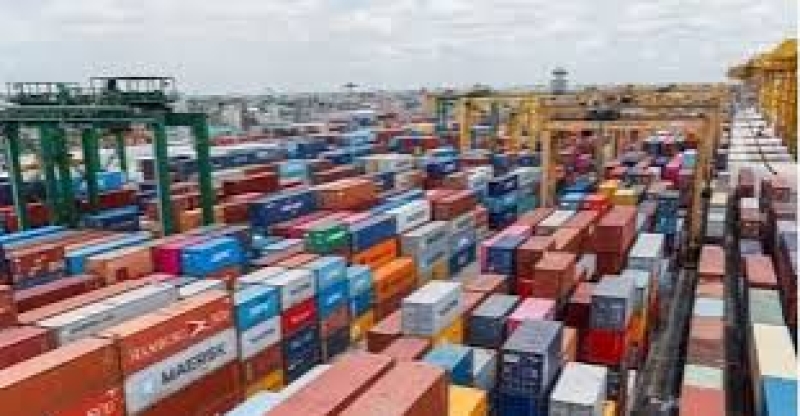- CA Yunus pays homage to Liberation War martyrs on Victory Day |
- Bangladesh capital market extends losing streak for second day |
- Bangladesh celebrates Victory Day Tuesday |
- 'Different govts presented history based on their own ideologies': JU VC |
BD's Struggle with Export Diversification: Key Challenges

Bangladesh's export growth over the last 35 years has been impressive, with a rise of over 5 percent since 1989-90. However, the country has struggled to achieve meaningful diversification, with its exports still heavily concentrated in just 8 to 9 major items.
So, why has Bangladesh failed to diversify its export products, despite consistent efforts?
According to Abu Mukhles Alamgir Hossain, Director of Policy and Planning at the Export Promotion Bureau (EPB), several promising sectors—such as leather and leather goods, jute and jute products, agricultural and processed goods, pharmaceuticals, ICT services, and light engineering—have not received the same level of policy support or incentives as the readymade garments (RMG) sector.
Hossain emphasized the need for sector-specific policies to assess both the advantages and disadvantages of diversification, drawing lessons from the strategies of competing nations.
Barriers to Export Diversification
Bangladesh faces a range of significant challenges in its pursuit of export diversification, including:
- Technological Gaps: The country's low technological advancements limit the development of new sectors.
- Inconsistent Trade Policies: Frequent policy shifts create uncertainty in the export landscape.
- Environmental and Compliance Issues: Stricter global standards and regulatory frameworks present obstacles for many industries.
- Skill Shortages: The workforce lacks the necessary expertise to compete in high-end markets.
- Limited Innovation and R&D: Investment in innovation is crucial for product diversification but remains underdeveloped.
- Logistical Hurdles: Inefficiencies in logistics impede the timely and cost-effective movement of goods.
- Intense Global Competition: With competitors advancing rapidly, Bangladesh struggles to maintain its foothold in key markets.
- Limited Access to Finance: Small and medium-sized enterprises (SMEs), vital to diversification, face difficulties in accessing affordable credit.
Hossain pointed out that SMEs, considered the backbone of Bangladesh’s economy, are especially hindered by high-interest rates and stringent collateral requirements. “If Bangladesh is serious about export diversification, prioritizing SME development is crucial,” he said.
He also emphasized that export diversification is a long-term process that cannot be achieved overnight. Long-term strategies, sector-specific policies, streamlined customs procedures, and improved logistics are essential for success.
Current Export Scenario
According to the EPB, Bangladesh’s exports totaled Tk 2.94 lakh crore (US$28 billion) from July to January of the 2024-25 fiscal year, with Tk 2.46 lakh crore (US$23.5 billion) coming from the garment sector alone. Overall, export earnings grew by 11.68 percent during this period, with RMG exports increasing by 12 percent. Knitwear and woven garments contributed 44.6 percent and 37.2 percent, respectively, to the country’s exports.
Despite the growth in export volume, Bangladesh’s export earnings remain highly dependent on clothing, and non-RMG sectors continue to show weak performance. Key export categories remain concentrated in knitwear, woven garments, agricultural products, leather, jute products, home textiles, fish, and engineering products.
Challenges in Expanding Export Markets
Bangladesh’s primary export destinations—such as the European Union, the United States, and the United Kingdom—continue to predominantly import clothing, capitalizing on the country’s expertise in garments and its competitive pricing. However, industry insiders warn that this over-reliance on these markets for a limited range of products could jeopardize long-term sustainability.
Dr. Mohammad Abdur Razzaque, Chairman of the Research and Policy Integration for Development (RAPID) think tank, called for a shift in focus toward export diversification, saying, “Although it is a long-term process, there is no alternative but to diversify in order to sustain the export sector.”
Dr. Razzaque, a former trade expert in the UK and EU, warned that global challenges could lead to a reduced demand for clothing exports in these markets, especially as competitors ramp up their own production capacities. Additionally, he pointed out that sanctions on China could indirectly affect Bangladesh’s garment sector, as the country imports a large portion of its raw materials from China.
Key Issues Hindering Export Diversification
Dr. Razzaque also pointed to several key issues hindering export diversification. “We have not given product diversification the serious attention it requires,” he said. One of the major concerns is compliance. The leather sector, for example, has untapped potential but continues to face significant challenges with meeting international compliance standards. “Mismanagement and corruption have kept the leather sector behind, despite having ample time to address these issues,” he added.
He also stressed the importance of improving workforce skills to make Bangladesh’s products more competitive in global markets. “Producing diversified, high-end products will give Bangladesh a critical edge in global exports,” Dr. Razzaque concluded.
The Road Ahead
While Bangladesh’s export sector has seen substantial growth, its overwhelming reliance on the RMG industry leaves it vulnerable to global shifts in demand and competition. Addressing key barriers, such as the lack of policy support for non-RMG sectors, compliance challenges, skill gaps, and financial constraints on SMEs, is crucial for meaningful diversification.
If Bangladesh does not take decisive action now, it risks stagnating its export growth and exposing itself to long-term economic vulnerability. The government and industry must commit to targeted reforms and investments in emerging sectors to ensure the future stability and resilience of the country's export economy.

